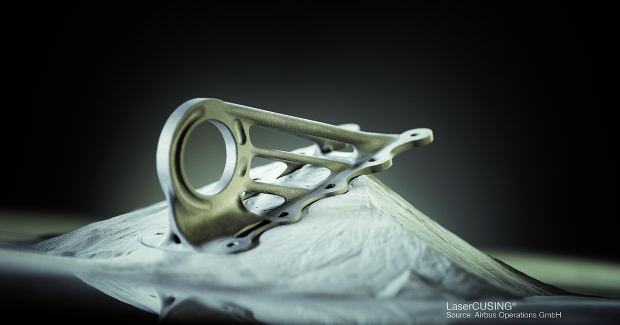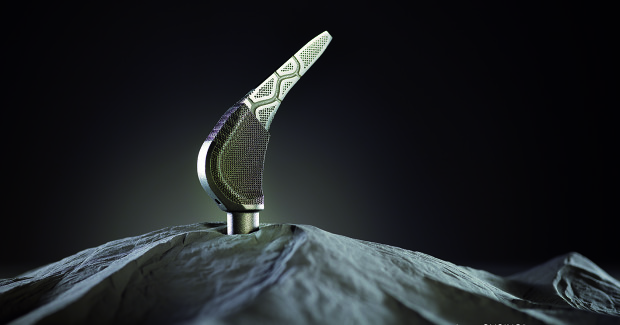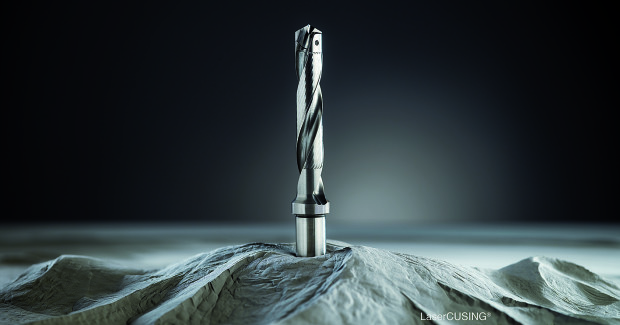The Pace of Innovation and the Speed of Business
Fabricators must recognize how metal additive manufacturing is rapidly changing the manufacturing landscape. Some have already been leapfrogged by their competition – and are completely unaware of what has happened.
Posted: December 23, 2015
Over three decades ago, additive manufacturing (AM) – often referred to as 3D printing – was introduced to the marketplace. Seen by many as a niche solution for rapid prototyping, these technologies primarily used thermoplastics to make significant advancements in aerodynamics, investment casting, surgical planning, tooling, flow analysis etc., but always in a limited capacity. Regardless of how many applications were developed for printed plastics, the latent demand for direct metal lurked as a panting behemoth just beneath the surface. Many attempts were made, yet success was elusive.
Pioneering 3D printing technologies that were introduced in the late 1980s and early 1990s provided the catalyst for the ‘rapid prototyping’ process that began changing the way people designed their products. In 1986, stereolithography was the first commercially available layer-additive process to enable the rapid prototyping of physical objects directly from a three-dimensional CAD model. Invented by Chuck Hull, stereolithography was the first technology in a new design and development space that became the rapid prototyping industry, and eventually 3D printing. In essence, Hull’s innovation ushered in a new era in product design that danced on the fringe of manufacturing.
While early AM technology primarily focused on plastics, innovators and early adopters of the technology realized metal AM technology would be the next logical and significant leap forward. Although sintered parts were available, back then the process did not allow for fully-dense metal parts. It required a secondary infiltration with an alloy. In the mid-1990s, Frank Herzog – who is now the chief executive officer of Concept Laser GmbH (Lichtenfels, Germany) – believed that what worked for plastics must also work with metals. He began pioneering work that used the existing plastic sintering technology and, after many trials and tests, he successfully produced fully-dense metal parts.
https://youtu.be/I0l-GUEQus0
Stresses in the component and the failure of the metal powder to fuse completely were the major hurdles to begin with. Herzog remedied this in part by his development of what is known as stochastic exposure, a process that involves stochastic control of the slice segments (also referred to as “islands”), which are processed successively. This patented process significantly reduces tension during the manufacture of very large components. The second milestone was his use of a solid-state laser that completely fused the component to a tenth of a millimeter, thereby ensuring dense components. This initial work developed into what eventually became the “LaserCUSING®” method in 1998. Herzog and his wife Kerstin founded Concept Laser in 2000, then introduced the M3 linear prototype one year later. And one year after that, they began delivering the world’s first 3D metal printing systems.
Once an exotic outsider, additive manufacturing methods using 3D metal printing began influencing a wide variety of industrial fields as Herzog’s work to produce fully-dense metals gained wide attention in Germany. Though the U.S. still remained primarily focused on plastics, his innovations continued to drive deeper into manufacturing: he was the first to deliver fully-dense parts, the first to introduce reactive metals to the market (titanium and aluminum), and the first to design and manufacture ATEX compliant systems to meet safety requirements. For the first time, engineers began to realize that metal AM was real – and this opened up design solutions that were never before thought possible.
The breadth of markets now integrating metal AM technologies includes aerospace, space, automotive, medical, dental, and tooling. Early adopters of metal AM technology included Airbus in Europe and NASA in the U.S., to name a few. Now segment leaders are combining the best of “manufacturing-oriented designs,” such as casting and milling, with the almost limitless aspects of “additive design content” as the industry discovers how the advantages of metal AM manufacturing nicely dovetail and leverage existing processes. By combining both traditional and new worlds, fully optimized designs can be delivered with better performance and increased added value.
This is all about unbridled creativity and understanding new possibilities developed for targeted use: With AM, integrating additional capabilities is now possible, including techniques such as the patented conformal and parallel cooling techniques that reduce plastic injection molding times by 30 percent to 50 percent. Bionic structures can withstand heavier stresses while being significantly lighter. Metal AM eliminates the need for substitutions, helps eliminate compromise and produces completely new solutions. Understanding this dynamic has been critical in developing the patented “hybrid build style” that combines and blends the advantages of conventional CNC processes with AM, bringing the best of both worlds together.
Enormous progress has now been made in terms of production speeds, assembly space sizes, safety and quality assurance. A unique in-situ 3D print monitoring process for quality assurance can now provide highly detailed 3D imaged maps of the entire build process (which will be examined in detail in a future column). Large build envelopes now use systems designed for 24/7 operation. All of these aggressive developments have moved metal AM from a somewhat eccentric method into a true industrial process.
Why is this important? From a competitive standpoint, as industrial and production strategies change to bring metal AM machines in-house, metal fabricators must strategically recognize that the traditional landscape of manufacturing is transforming very rapidly. For example, some of our own customers have a frenetic passion for AM and have been engaged in customizing it for production for over a decade. Others remain stuck in the “let’s wait and see” stage, and some of them have already been leapfrogged by their competition – and are completely unaware of what has happened.
That’s not all. A number of key developments are going to take place with metal AM in the coming years, as AM processes supplement and complement traditional production strategies Key influencing factors include costs, time and quality, complexity of the components, end use requirements and integration of formerly disparate functions. This paradigm shift is already highly advanced in certain sectors – the global medical industry is the most aggressive, and the American aerospace industry is now practicing AM for new innovations as standard in light of time and cost considerations. Airbus has fully embraced AM technologies and plans to produce 30 tons of metal parts per month by 2018.
There’s more. In contrast to manufacturing processes based on molds or subtractive methods, the efficiency of metal AM processes actually increases as component geometry becomes more complex. Production-on-demand capabilities are changing logistics concepts and spare part reserves. Maintenance tasks and retrofitting can be performed in quick succession, thereby reducing downtime. With AM technologies, smaller and “produce when needed” batch sizes can now be produced cost-effectively. AM produces far less waste and its systems are energy-efficient. The additive approach enables designers and engineers to adapt to new opportunities. Future components will perform better and true lightweight building approaches will take hold. It will be possible to produce bionic structural elements and geometric freedom will spark a wealth of new product ideas.
Think about all of that for a moment. Metal AM is still in the early stages, but it is already becoming a critical process for fabricators who are keenly competitive.


















